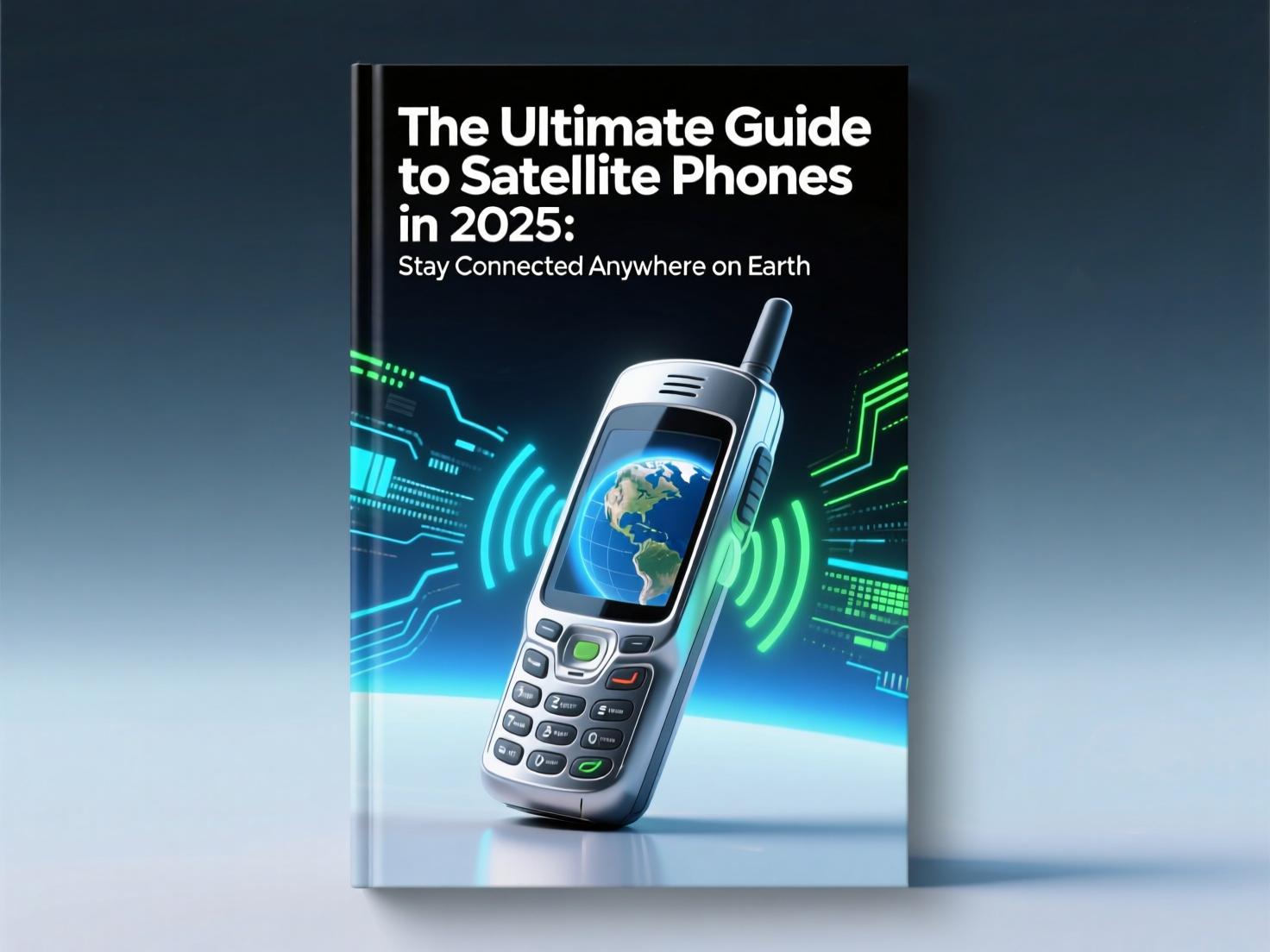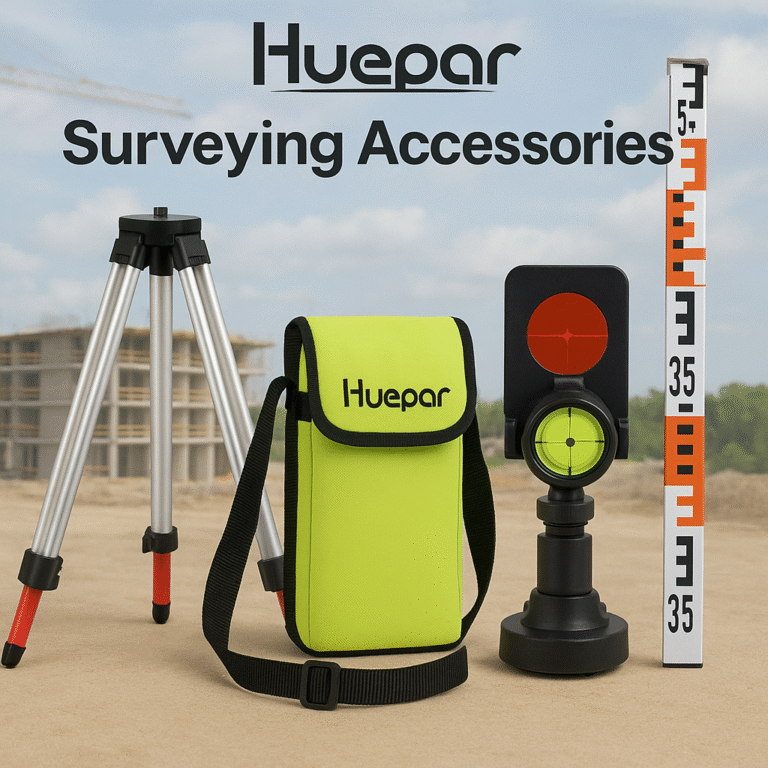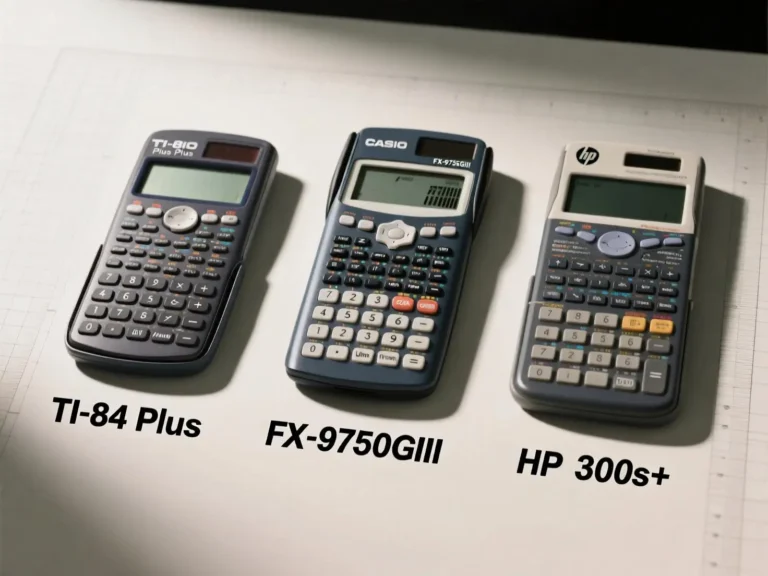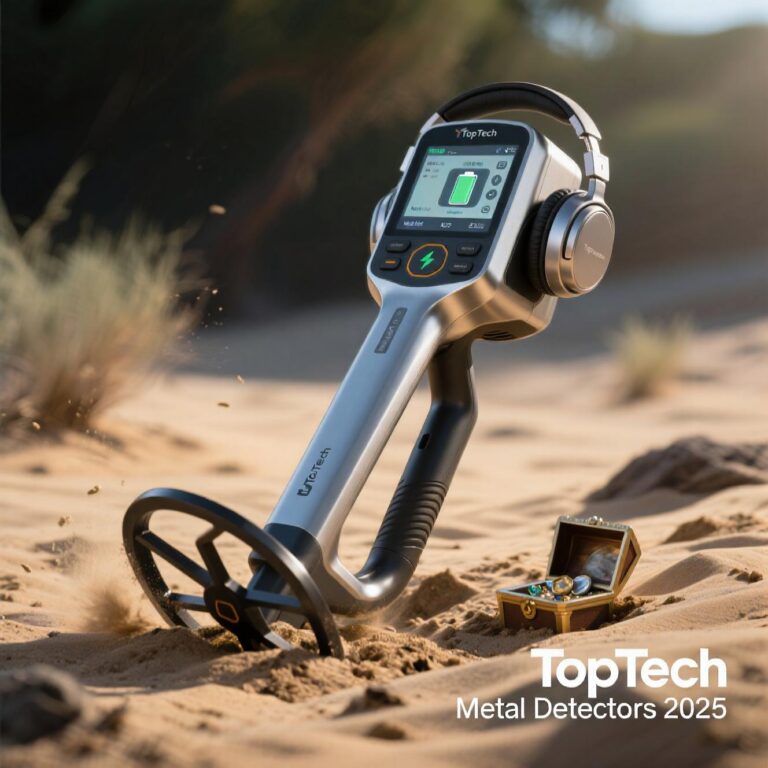Top Satellite Phones in 2025: Reviews and Recommendations

In an age where we’re constantly connected—streaming videos, video-calling across continents, and navigating with GPS—it’s easy to forget how fragile our communication networks can be. One storm, a remote hiking trail, or a sudden emergency in the wilderness can sever that digital lifeline in seconds. That’s where satellite phones come in.
If you’ve ever found yourself out of cell range, worried about safety during a backcountry trip, or prepared for emergencies with a go-bag, a satellite phone might be the missing piece in your tech arsenal. In this comprehensive guide, we’ll break down everything you need to know about satellite phones, why they matter, how they compare to smartphones, and which models are worth your investment in 2025.
Whether you’re an adventurer, a prepper, a sailor, or just someone who values reliable communication, this post will help you understand how satellite phones work and how they can keep you safe and connected—no matter where you are.
What Is a Satellite Phone?
A satellite phone (or sat phone) is a mobile communication device that connects to orbiting satellites instead of terrestrial cell towers. Unlike your smartphone, which relies on a network of ground-based cell towers, a satellite phone sends and receives signals directly to and from satellites in space. This allows it to function in remote areas where traditional cellular coverage is unavailable—think deserts, oceans, polar regions, or dense forests.
Satellite phones are not new. They’ve been used for decades by militaries, explorers, and maritime crews. But today, thanks to advancements in satellite technology and miniaturization, they’re more accessible, affordable, and user-friendly than ever before.
How Do Satellite Phones Work?
To understand how satellite phones work, let’s first compare them to regular cell phones.
Cellular Networks vs. Satellite Networks
Your smartphone connects to a cellular network—a web of ground-based towers that transmit signals over radio frequencies. These towers are spaced a few miles apart in cities but become sparse or nonexistent in rural or remote areas. When you move out of range, your phone loses signal.
Satellite phones, on the other hand, bypass ground infrastructure entirely. They communicate with satellites orbiting Earth, which relay your calls, texts, and data to ground stations connected to the global telecom network.
There are two main types of satellite orbits used for communication:
- Geostationary (GEO) Satellites
- Orbit ~22,000 miles above Earth
- Fixed position relative to Earth
- Used by services like Inmarsat
- Pros: High bandwidth, stable for voice and data
- Cons: Limited polar coverage, signal delay (latency), requires line-of-sight to the equator
- Low Earth Orbit (LEO) Satellites
- Orbit 400–1,200 miles above Earth
- Move rapidly around the planet
- Used by Iridium and Globalstar
- Pros: Near-global coverage (including poles), low latency, better signal in motion
- Cons: Requires a large constellation of satellites for continuous coverage
Most modern satellite phones use LEO networks because they offer true global coverage and better performance in dynamic environments like moving vehicles or aircraft.
When you make a call on a satellite phone:
- Your device sends a signal to the nearest satellite overhead.
- The satellite relays the signal to a ground station (called a gateway).
- The gateway connects to the public switched telephone network (PSTN) or internet.
- The call reaches its destination—another phone, landline, or app.
This entire process happens in seconds, though voice quality may vary depending on weather, terrain, and satellite positioning.
Top Satellite Phones in 2025: Reviews & Recommendations
Now that you understand the technology, let’s look at the best satellite phones available today. All of these are available on Amazon with fast shipping and customer reviews. (Disclosure: Techgeo.org participates in the Amazon Affiliate Program.)
1. Garmin Satellite Phone
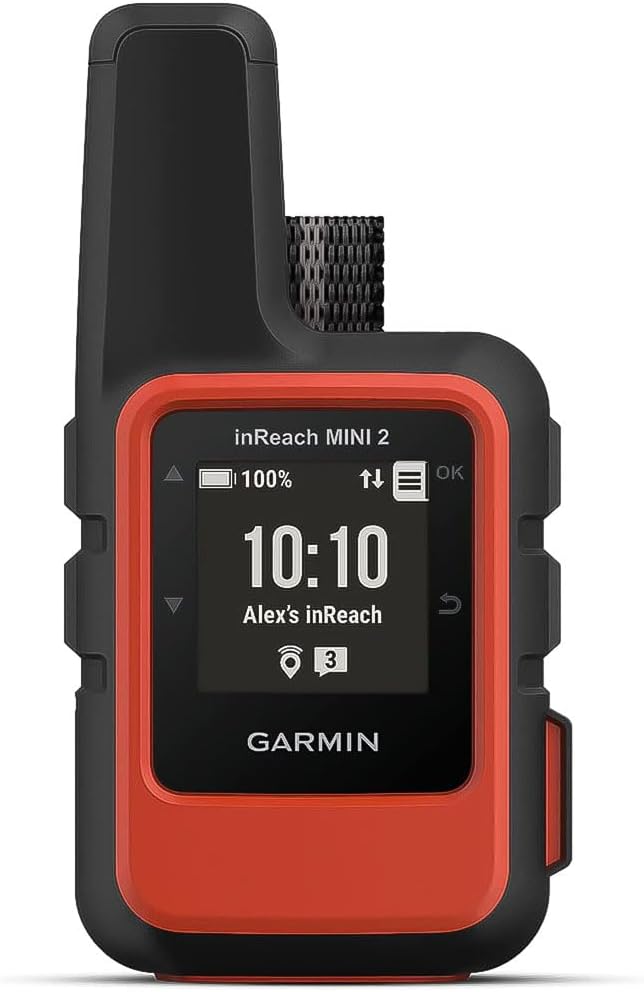
Lightweight and Compact Satellite Communicator, Hiking Handheld, Orange – 010-02602-00
2. BlueCosmo Inmarsat IsatPhone 2.1
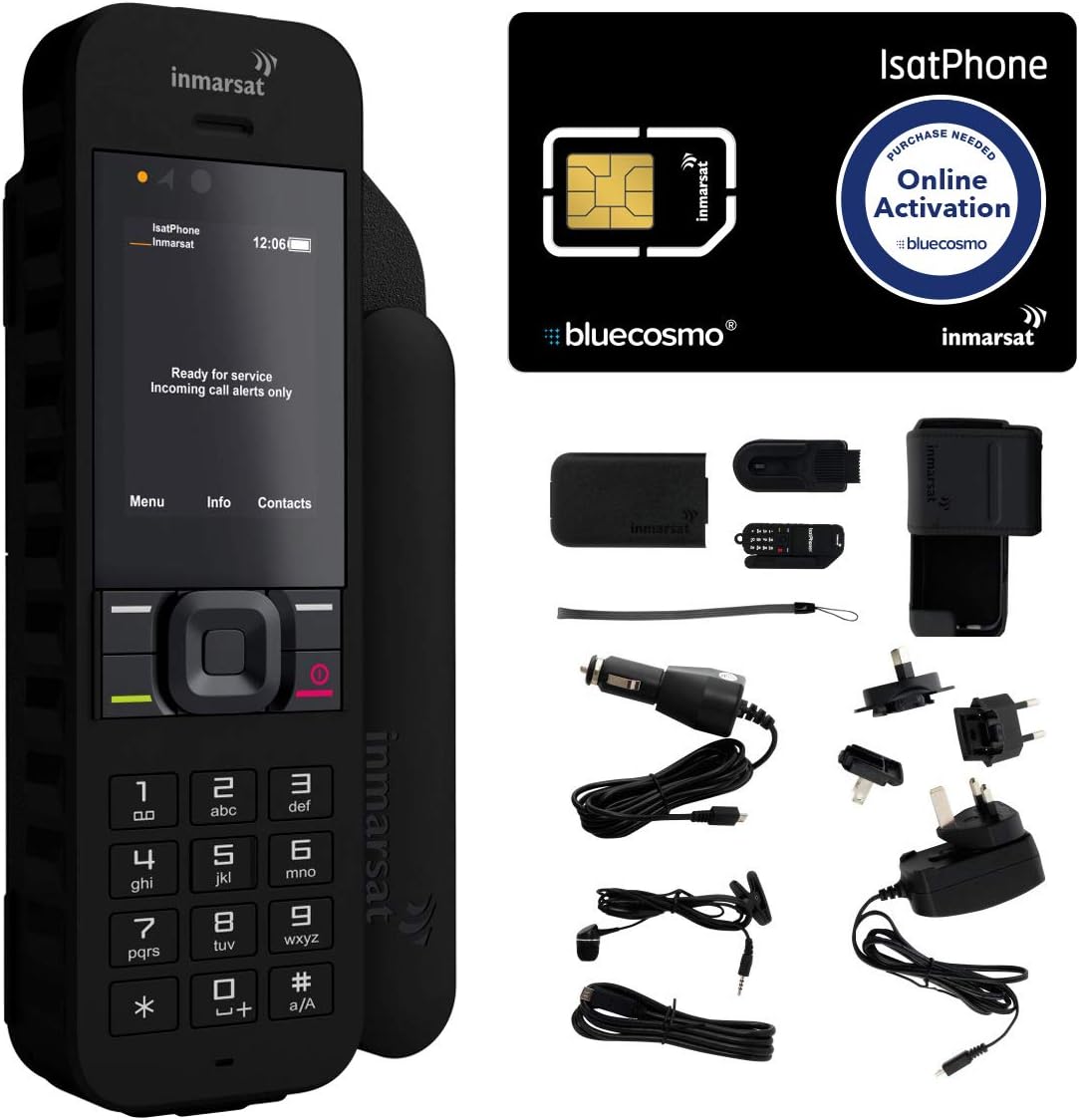
Satellite Phone Kit (SIM Included), unlocked – Global Coverage – Voice, SMS, GPS Tracking, Emergency SOS – Prepaid and Monthly Service Plan Options
3. ZOLEO Satellite Phone Communicator (Best Seller)
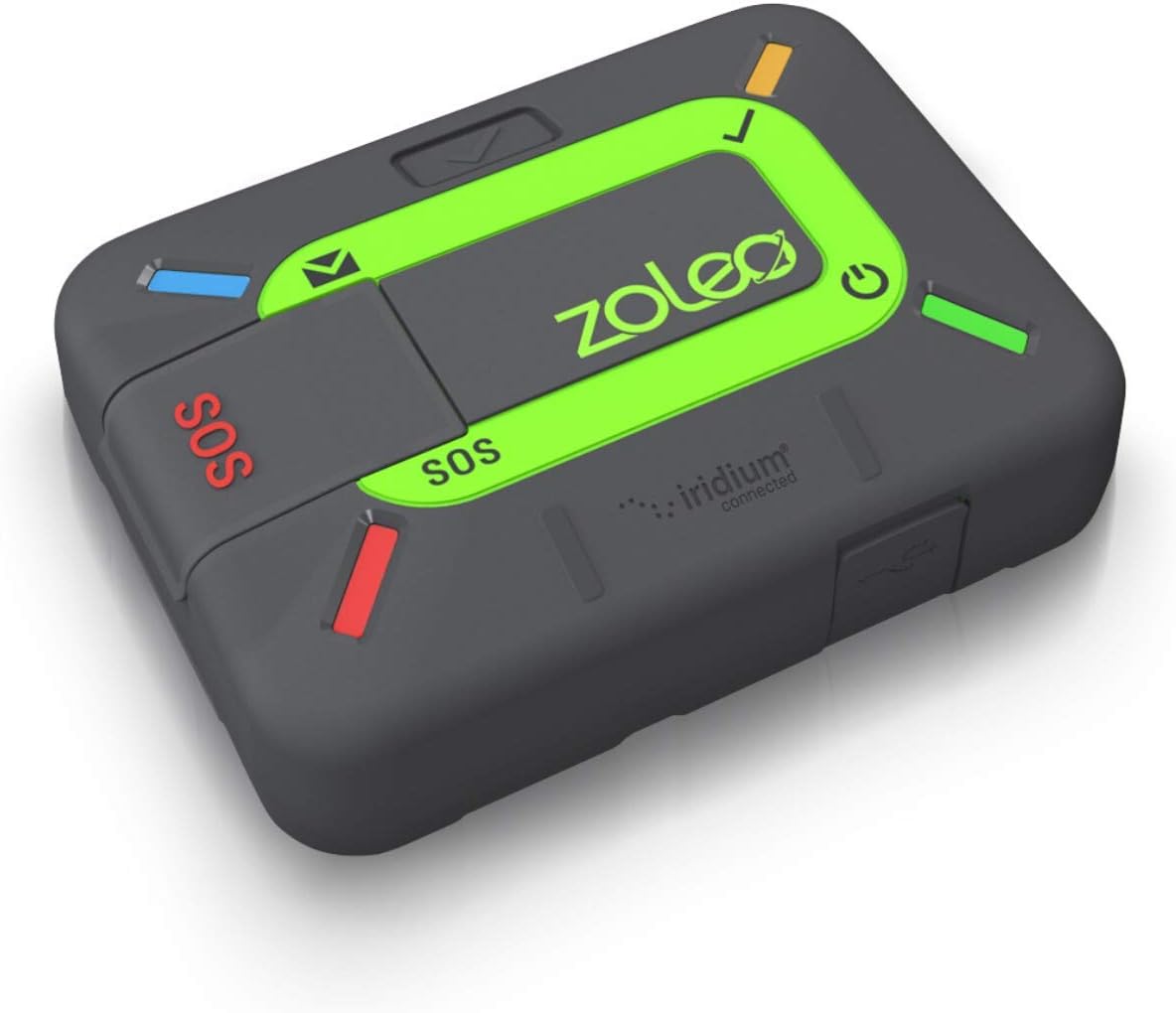
Two-Way Global SMS Text Messenger & Email, Emergency SOS Alerting, Check-in & GPS Location – Android iOS Smartphone Accessory
Why Satellite Phones Are Essential in 2025
While most of us rely on smartphones, satellite phones serve a critical role in scenarios where cellular networks fail. Here are the top use cases where a sat phone isn’t just useful—it’s potentially life-saving.
1. Emergency Preparedness
Natural disasters like hurricanes, wildfires, and earthquakes often knock out power and cellular infrastructure. In such situations, satellite phones remain operational because they don’t depend on local towers.
According to the Federal Emergency Management Agency (FEMA), having a backup communication method is a key part of any emergency kit. A satellite phone ensures you can call for help, coordinate with family, or contact emergency services when everything else fails.
2. Remote Travel & Overlanding
Adventure travelers, overlanders, and off-grid explorers often venture into areas with zero cell coverage. Whether you’re crossing the Australian Outback, the Sahara Desert, or the Alaskan tundra, a satellite phone lets you stay in touch with loved ones and dispatchers.
Some models even support GPS tracking and SOS alerts—critical features when help is days away.
3. Sailing & Maritime Use
At sea, cellular signals fade within a few miles of the coast. Satellite phones are standard equipment on commercial vessels and increasingly popular among recreational sailors.
Services like Inmarsat’s Fleet One and Iridium’s Certus offer voice, text, and broadband data for maritime use. Many sat phones also integrate with marine radios and navigation systems.
4. Hiking & Mountaineering
Backpackers and climbers heading into high-altitude or remote regions (e.g., Himalayas, Patagonia, or Denali) benefit from satellite phones for safety. Unlike personal locator beacons (PLBs), sat phones allow two-way communication—so you can describe your situation, receive instructions, or call for evacuation.
5. Aviation & Remote Pilots
Pilots flying over remote areas (e.g., Arctic routes or Pacific islands) use satellite phones for real-time weather updates, flight coordination, and emergency communication. While not a replacement for aviation radios, they’re a valuable backup.
6. Military & Government Use
Satellite phones have long been used by military forces for secure, reliable communication in conflict zones or disaster response. Their independence from local infrastructure makes them ideal for operations where traditional networks are compromised.
7. Natural Disaster Response
First responders, NGOs, and relief organizations deploy satellite phones immediately after disasters. When local networks are down, sat phones enable coordination of rescue efforts, medical aid, and supply distribution.
Organizations like the Red Cross and Doctors Without Borders rely on satellite communication in crisis zones worldwide.
Satellite Phone vs. Smartphone: A Side-by-Side Comparison
| Feature | Satellite Phone | Regular Smartphone |
|---|---|---|
| Coverage | Global (including oceans, poles, deserts) | Limited to cellular network range |
| Reliability | Works during disasters, outages, and remote travel | Fails without cell signal or Wi-Fi |
| Battery Life | 8–32 hours (varies by model) | 10–24 hours (with heavy use) |
| Voice Quality | Good (may have slight delay) | Excellent (in good signal areas) |
| Data Speed | Slow (0.1–2 Mbps) | Fast (4G/5G up to 1 Gbps) |
| Cost | $500–$1,500 (device) + $50–$150/month service | $600–$1,200 (device) + $30–$80/month |
| Use Cases | Emergencies, remote travel, maritime, aviation | Daily communication, apps, media |
While smartphones dominate daily life, satellite phones excel in reliability and coverage when it matters most. They’re not meant to replace your smartphone but to complement it as a backup communication tool.
Major Satellite Networks: Iridium, Inmarsat, and Globalstar
Not all satellite phones are the same. The performance and coverage depend largely on the satellite network they use. Here’s a breakdown of the three major providers:
1. Iridium
- Network Type: LEO (66 satellites)
- Coverage: True global (including poles)
- Key Features: Iridium Certus for broadband, push-to-talk, IoT support
- Best For: Global travelers, polar expeditions, aviation, maritime
Iridium is the only provider with 100% global coverage, including the North and South Poles. Its network is used by NASA, the U.S. military, and adventurers like polar explorers.
👉 Learn more: Iridium Satellite Network Overview (Official Site)
2. Inmarsat
- Network Type: GEO (geostationary)
- Coverage: Global except extreme polar regions
- Key Features: High-speed data (BGAN), maritime safety (GMDSS), aviation services
- Best For: Maritime, aviation, enterprise, disaster response
Inmarsat is known for its reliable data services and is widely used in shipping and emergency management. Its newer Orchard and ELERA networks are improving LEO capabilities.
👉 Explore: Inmarsat Global Services
3. Globalstar
- Network Type: LEO (48 satellites)
- Coverage: Up to 70° latitude (no polar coverage)
- Key Features: SPOT devices, low-cost plans, satellite messaging
- Best For: North American and tropical travel, hiking, budget users
Globalstar offers affordable hardware and plans, but its coverage is limited near the poles. It’s popular for SPOT trackers and basic voice/text needs.
👉 Visit: Globalstar Satellite Services
Who Should Own a Satellite Phone in 2025?
You don’t need to be a Navy SEAL or a polar explorer to benefit from a satellite phone. Here’s who should consider one:
- Outdoor Enthusiasts: Hikers, climbers, kayakers, and overlanders
- Sailors & Boaters: Especially those venturing offshore
- Preppers & Survivalists: For emergency communication
- Remote Workers: Geologists, field researchers, journalists
- Pilots & Aviation Crews: Flying in remote regions
- Travelers to Remote Destinations: Antarctica, Amazon, Himalayas
- Emergency Managers: Coordinating disaster response
Even if you never use it, having a satellite phone provides peace of mind—knowing you can call for help when no one else can.
Buying Tips: How to Choose the Right Satellite Phone
Before purchasing, consider these factors:
- Coverage Needs
- Do you need polar coverage? → Choose Iridium
- Staying in tropical or temperate zones? → Globalstar or Inmarsat may suffice
- Use Case
- Voice-only? → Inmarsat IsatPhone 2
- SOS and tracking? → Iridium Extreme
- Data and apps? → Thuraya X5-Touch or Iridium GO!
- Budget
- Entry-level: Globalstar GSP-1700 (~$600)
- Premium: Iridium 9555 or Extreme (~$1,200–$1,500)
- Service Plans
- Pay-as-you-go vs. monthly plans
- Check for rollover minutes and data options
- Some providers offer “unlimited texting” add-ons
- Accessories
- Consider a vehicle mount, extra battery, or satellite hotspot for multiple devices
- Activation & Support
- Ensure the provider offers 24/7 customer service and easy activation
👉 Pro Tip: Rent before you buy. Companies like Satellite Phone Store offer rental options for short trips.
Emerging Trends: The Future of Satellite Communication
Satellite phones are evolving fast. Here are key trends shaping 2025 and beyond:
1. Satellite Messaging on Smartphones
Apple’s iPhone 14/15/16 series introduced Emergency SOS via Satellite, allowing users to send text messages via satellite when out of cell range. Similarly, Huawei and Google Pixel are testing satellite texting.
While not full voice calls, this feature is a game-changer for everyday users. It relies on Globalstar’s network and is free for the first two years.
👉 Learn more: How iPhone Satellite SOS Works (Techgeo.org)
2. Satellite Hotspots
Devices like the Iridium GO! and Inmarsat BGAN act as portable Wi-Fi hotspots, connecting your smartphone or tablet to satellite networks. You can use your regular apps—email, WhatsApp, even Zoom—over satellite.
Ideal for journalists, remote workers, and expedition teams.
3. Integration with Wearables
Garmin and Apple are exploring satellite connectivity in smartwatches. The Garmin inReach Mini 2 already offers two-way texting via satellite—compact and lightweight for hikers.
4. LEO Constellations & Starlink Competition
Companies like Starlink (SpaceX) and Amazon’s Project Kuiper are launching massive LEO constellations. While focused on broadband, they may eventually offer mobile voice services—potentially disrupting traditional sat phone providers.
Final Thoughts: Is a Satellite Phone Worth It?
For most people, a satellite phone isn’t a daily driver. But for those who venture beyond the grid, face emergencies, or work in remote locations, it’s an essential safety tool—not a luxury.
Think of it like insurance: you hope you never need it, but when you do, it can save your life.
In 2025, with rising climate disasters, increased outdoor recreation, and smarter integration with personal devices, satellite phones are more relevant than ever. Whether you choose a rugged Iridium model for global expeditions or rely on your iPhone’s satellite SOS for peace of mind, staying connected should never depend on luck.
Ready to Stay Connected Anywhere?
Have questions? Drop them in the comments below. And don’t forget to share this guide with anyone who loves adventure—or values safety.
Sources:
- Federal Emergency Management Agency (FEMA)
- International Telecommunication Union (ITU)
- Iridium, Inmarsat, and Globalstar Official Websites

